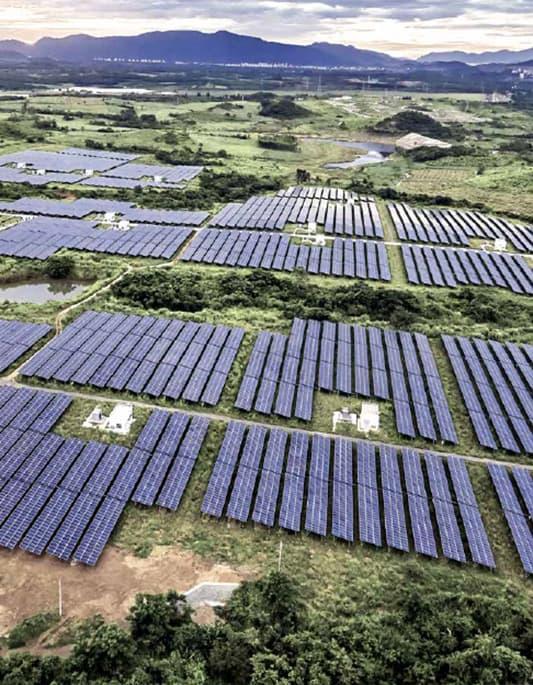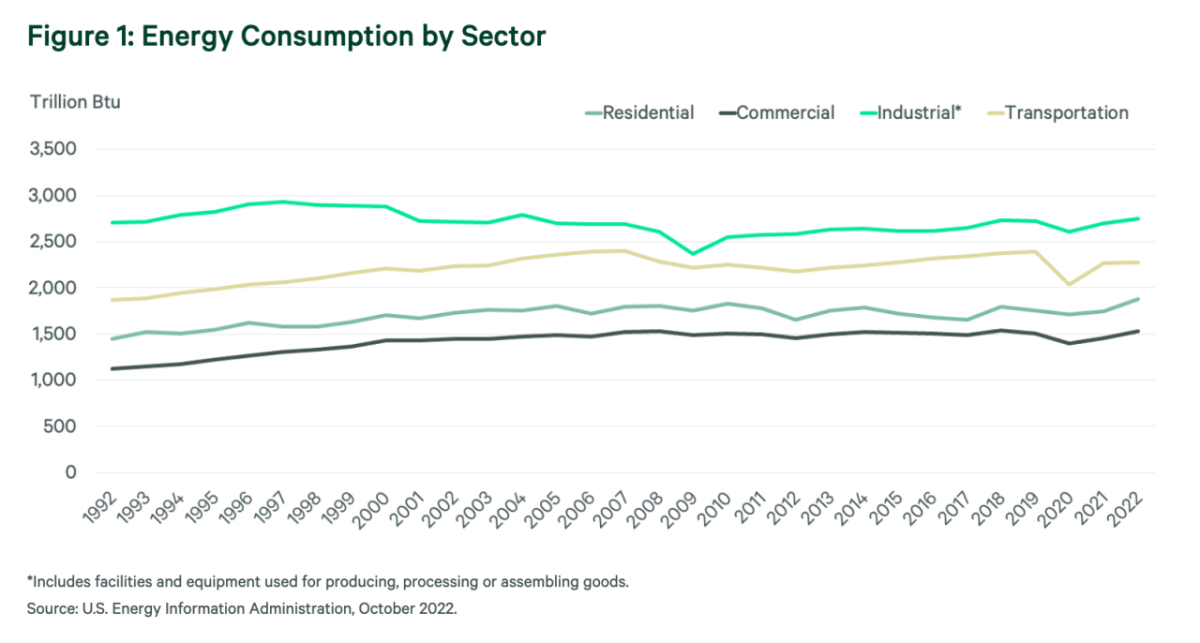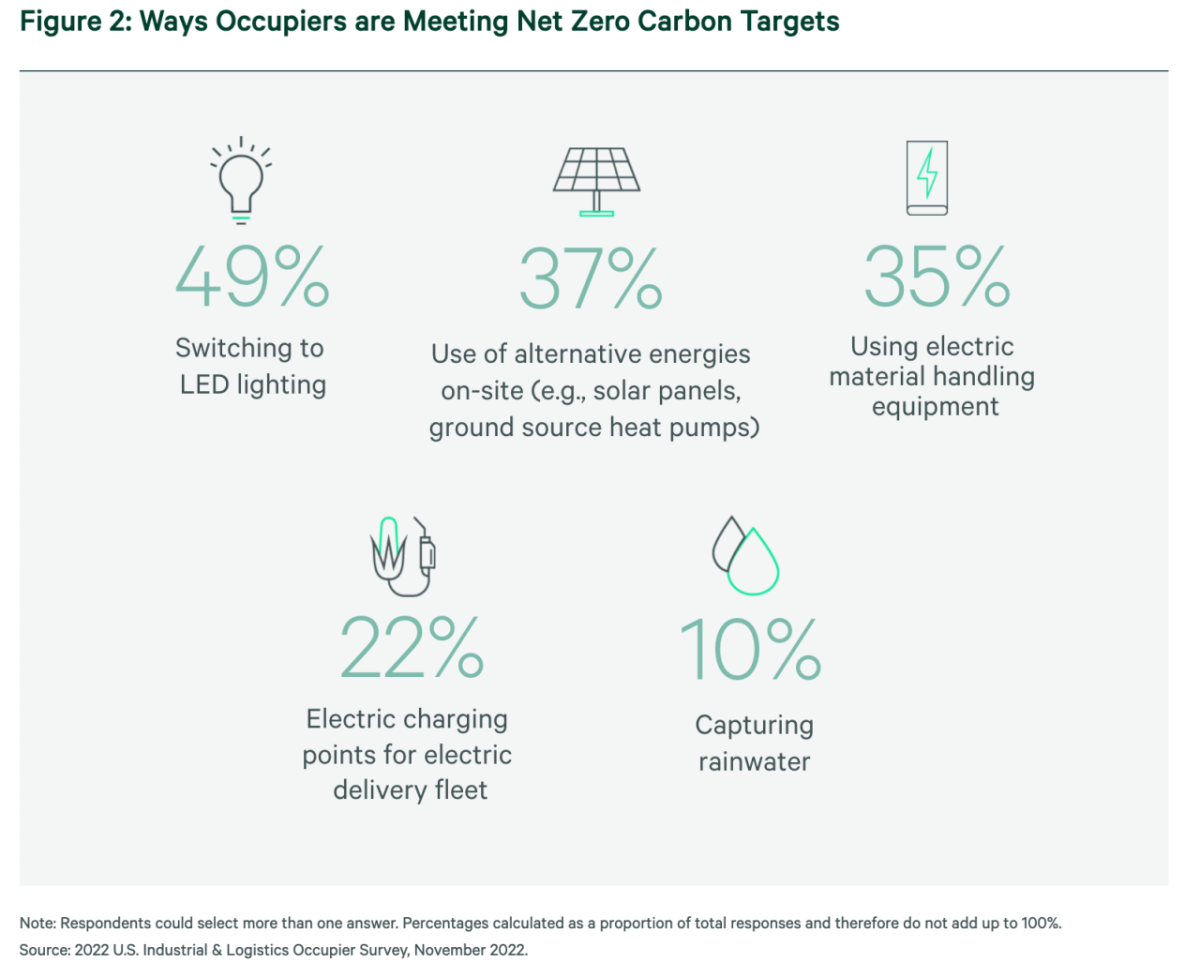Here Comes the Sun: Solar Power Opportunities for Industrial Real Estate
Published 02-01-23
Submitted by CBRE Group, Inc.

With a record 662 million sq. ft. under construction and continued strong occupier demand, the U.S. industrial real estate sector can play a major role in meeting carbon-reduction and energy-efficiency goals by using solar energy.
The industrial sector has consumed 79% more energy than the commercial sector over the past 10 years, according to the U.S. Energy Information Administration (EIA).1 CBRE’s 2022 U.S. Industrial & Logistics Occupier Survey found that power supply is among the three most important site-selection criteria for industrial occupiers, reflecting the large amount of electricity they use and the attractiveness of renewable energy sources.

The Biden administration has set a national goal for 100% carbon-emission-free electricity by 2035. One opportunity for industrial real estate to help achieve this is by utilizing solar photovoltaic (PV) systems, which are becoming increasingly more affordable. Solar power reduces the need to burn fossil fuels for electricity, which account for one-quarter of total U.S. greenhouse gas emissions, according to the U.S. Environmental Protection Agency. Nearly 40% of CBRE occupier survey respondents said they are using alternative energies on-site, including solar panels, to meet their own carbon-reduction targets.
Large industrial facilities (100,000+ sq. ft.) are ideal for solar-panel installations, particularly in markets with high amounts of new construction like Dallas, Phoenix, Chicago, Atlanta and California’s Inland Empire. Many of these markets offer state incentives to lower the up-front building costs.

Solar systems can reduce a building’s reliance on grid-supplied electricity by as much as 80% and in many cases reduce electric bills by up to 95%, according to a recent CBRE Viewpoint. Furthermore, in populated areas, excess clean energy generated by a solar PV system can be sold to a public utility, generating revenue for building owners.
More than 70% of respondents to CBRE’s occupier survey said they are willing to pay a higher rent for buildings powered by green energy, particularly if it is offset by operational cost savings.

As the U.S. sets aggressive carbon reduction goals, utilizing solar energy to power modern bulk industrial buildings also has the potential to increase operational efficiency and profitability for building owners.
1 Industrial sector as defined by EIA includes facilities and equipment used for producing, processing or assembling goods. Commercial sector refers to service-providing facilities and equipment of businesses; federal, state, and local governments; and other private and public entities, such as religious, social or fraternal groups.

CBRE Group, Inc.
CBRE Group, Inc.
CBRE Group, Inc. (NYSE:CBG), a Fortune 500 and S&P 500 company headquartered in Los Angeles, is the world’s largest commercial real estate services and investment firm (in terms of 2013 revenue). The Company has approximately 44,000 employees (excluding affiliates), and serves real estate owners, investors and occupiers through approximately 350 offices (excluding affiliates) worldwide. CBRE offers strategic advice and execution for property sales and leasing; corporate services; property, facilities and project management; mortgage banking; appraisal and valuation; development services; investment management; and research and consulting. Please visit our website at www.cbre.com.
More from CBRE Group, Inc.

